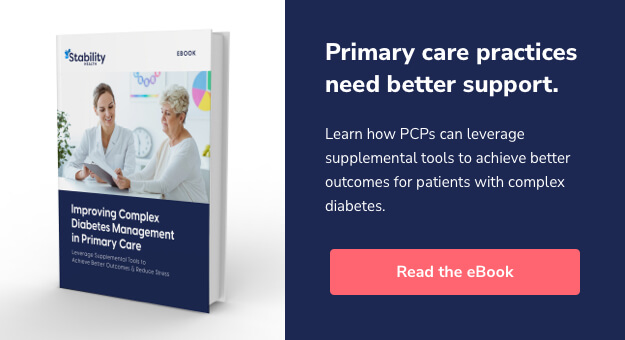
HEDIS Diabetes Measures – Understanding Comprehensive Care
HEDIS Requirements for Diabetes Measures
As a chronic condition, diabetes requires constant management by patients and consistent support from clinical care teams. This support system is offered through thousands of different individual providers and hundreds of clinics and hospitals in the U.S. With such a large variance of where care originates, it’s important to have some standards of measurement to ensure that provided care is effective, responsive, and comprehensive. One important set of standards that both patients and clinicians should be familiar with is the Healthcare Effectiveness Data and Information Set – also known as HEDIS.
Why Use HEDIS?
Originally created in 1991 by the National Committee for Quality Assurance (NCQA), HEDIS was designed as a means for consumers to compare a health plan’s performance against a set of benchmarks in order to effectively evaluate and compare against other health plans. Over the past several decades, HEDIS has increasingly become a means by which healthcare plans are able to track their own year-to-year performance in order to maximize care and better meet patient needs.
HEDIS data reporting is also required by the Centers for Medicare & Medicaid Services (CMS) so they can monitor the quality of Medicare Advantage plans. Based on data received, CMS issues a Five-Star Quality Rating as a way for Medicare beneficiaries to measure quality of care. Currently, HEDIS consists of 90 different measures across six domains of care:
- Effectiveness of Care
- Access/Availability of Care
- Experience of Care
- Utilization and Risk Adjusted Utilization
- Health Plan Descriptive Information
- Measures Reported Using Electronic Clinical Data Systems
HEDIS is an especially useful means of offering a comprehensive view of care for patients with chronic conditions like diabetes. As a standard of measurement for patient care, HEDIS Comprehensive Diabetes Care (CDC) has been shown to assist in the improvement of overall quality of care, which in turn can result in better health among patients with diabetes.
A 10% point improvement in plan performance on HEDIS intermediate outcomes (the proportion of well-controlled diabetes) is related to a significant positive increase in self-reports of positive physical and mental health for plan enrollees. When clinicians adhere to standards and adjust their level of care accordingly, patients benefit.
How Is HEDIS Used?
Fundamentally, HEDIS is used as a measure of effectiveness of care, access to care, and the experience of care. Its most “official” use is through the CMS five-star metrics measures. Higher star ratings for organizations enrolled in Medicare Advantage will receive quality bonus payments (QBPs) and rebates. Specifically, four- or higher-star ratings will trigger direct bonus payments to plan operators and rebates that can be returned to their beneficiaries.
Likewise, low scores also have consequences. CMS has instituted a “three strikes” rule for plans that fail to achieve at least a three-star rating for three consecutive years. As of February 2016, low-performing plans receive nonrenewal notices – meaning they cannot enroll members during the following calendar year and will need to raise their ratings in order to begin enrollment again.
While the government only officially uses HEDIS as a means to determine payments related to Medicare Advantage, its widely accepted application as a common quality measure has seen it increasingly used to determine payment to hospitals, physicians, and other healthcare providers. It is now used by more than 90% of America’s health plans as an opportunity to identify areas for improvement in care.
Despite its increasing use by payers and providers, it is important to remember that the original intent of HEDIS was to inform consumers about the difference in the quality of care in available health plans. The NCQA publishes its annual Health Insurance Plan Ratings online for consumers.
Who Can Use HEDIS?
The short answer is that anyone can use HEDIS. Employers and consumers can use HEDIS measures to make a comparison on an “apples-to-apples” basis when deciding what health plan to choose for personal use or for their business. Competition in the health care market is meant to drive consumers to health plans that offer affordable care that meets a high standard of quality.
This competition means that many health systems and plans use HEDIS to measure performance, or as a kind-of personal “report card.” In turn, health plans put pressure on associated clinicians to make sure they’re meeting expectations. The NCQA will work with health care organizations, vendors, consultants, and federal and state entities that want to incorporate HEDIS measure specifications in their products, programs, or services.
HEDIS Requirements for Diabetes Measures
As a chronic condition, diabetes requires consistent medical care and monitoring to reduce the risk of severe complications and improve patient outcomes. Because diabetes affects the entire body, HEDIS diabetes measures have multiple benchmarks for care that go beyond just glycemic control.
The HEDIS assessment measurements for comprehensive diabetes care apply to health plan members between the ages of 18 and 75 with type 1 or 2 diabetes. The four measurements all must have been taken within the measurement year and are as follows:
- HbA1c control
- Measures the percentage of plan members who’ve had an HbA1c test during that year that demonstrates good control.
- Measures the percentage of plan members who have HbA1C in control, defined as <8%.
- Measures the percentage of plan members who are in Poor control, defined by HbA1ct >9.0%.
- Missing test results will also not be compliant with HEDIS or the CMS Five-Star Quality Rating.
- Retinal Eye Exams
- Measures the percentage of plan members who have had a comprehensive eye exam to screen or monitor for diabetic retinal disease, and includes those patients who have had:
- a retinal or dilated eye exam by an optometrist or ophthalmologist in the measurement year.
- a negative retinol or dilated eye exam (negative for retinopathy) by an optometrist or ophthalmologist in the year prior to the measurement year.
- bilateral eye enucleation any time during the member’s history through the measurement year.
- Measures the percentage of plan members who have had a comprehensive eye exam to screen or monitor for diabetic retinal disease, and includes those patients who have had:
- Nephropathy Screening
- Measures the percentage of plan members who have had a test to check for deterioration of kidney function. This is commonly performed by performing a urine test to screen for microalbuminuria.
- Blood Pressure Control
- Measures the percentage of plan members who’ve had a blood pressure control test (<140/90 mm Hg).
Improving Patient Outcomes
Proper diabetes management is essential for controlling blood glucose, reducing risks for complications, and prolonging a higher quality of life. While patients are mainly responsible for their self-care, the HEDIS measures help to ensure that clinicians are following through with their responsibility in monitoring status of diabetes, screening for potential complications, and helping patients achieve control of their diabetes.
Stability Health is committed to improving patient outcomes, and many of the support services we offer help to address the areas of diabetes care management that HEDIS covers. Through providing education and resources, we aid patients in managing their care, while also assisting clinicians in performing more comprehensive evaluations to identify those most at risk to improve patient care.
We’re helping customers and partners improve diabetes HEDIS metrics through:
- Reminders and updates about medication adherence.
- Coaching and reminders for patients to complete diabetes-related health maintenance checks (eye exams, labs, vaccines).
- Providing expert guidance and validation to primary care providers to drive therapeutic momentum.
By providing services that help to fill the gaps in the current care delivery system, the Stability Health digital operating system optimizes comprehensive care for each patient to meet the goal of healthier outcomes.
Additional Resources
- Electronic Clinical Data System Reporting for HEDIS
How Electronic Clinical Data Systems (ECDS), such as case management systems and electronic health records, are improving HEDIS reporting. - HEDIS and Telehealth
How the NCQA is working to integrate telehealth with traditional care modalities and its impact on HEDIS measures. - NCQA’s CDC Assessment by Year
Reports on the CDC measures separating out commercial HMOs, commercial PPOs, Medicaid, and Medicare providers.



